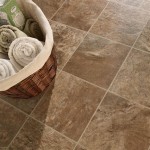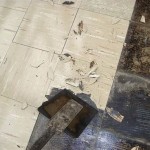Travertine Flooring Costs: A Comprehensive Guide
Travertine, a form of limestone deposited by mineral springs, is a popular flooring choice appreciated for its natural beauty, durability, and unique textures. Understanding the costs associated with travertine flooring is crucial for homeowners considering this option. The total expense encompasses not only the cost of the material itself but also installation charges, preparation work, and potential maintenance requirements.
The following article provides a detailed examination of the various factors influencing travertine flooring costs, offering clarity and resources for informed decision-making. It explores material variations, installation complexities, and long-term maintenance considerations to provide a comprehensive overview of the financial implications of choosing travertine flooring.
Factors Influencing Travertine Material Costs
The price of travertine flooring is subject to several factors that determine its overall value. These factors include the travertine grade, finish, size, and origin. Understanding these variables allows for a more accurate estimation of material expenses.
Grade: Travertine is typically categorized into different grades, such as commercial, standard, and premium. Premium grade travertine boasts the most uniform color, minimal imperfections, and consistent thickness, commanding a higher price. Commercial grade, on the other hand, may exhibit more visible imperfections, color variations, and inconsistencies, making it a more budget-friendly option. Standard grade sits between these two extremes, offering a balance between quality and affordability.
Finish: The finish applied to travertine influences both its appearance and cost. Common finishes include polished, honed, tumbled, and brushed. Polished travertine features a glossy, reflective surface, often requiring more processing and, thus, incurring higher costs. Honed travertine has a matte, smooth surface, providing a more natural look at a potentially lower price point. Tumbled travertine has a textured, rustic appearance achieved through a tumbling process, which can affect its cost. Brushed travertine features a textured surface created by brushing the stone, and its price varies depending on the level of brushing and the quality of the stone.
Size and Shape: Travertine tiles are available in a variety of sizes and shapes, from standard square or rectangular tiles to more elaborate patterns like mosaics and French patterns. Larger tiles generally have a higher price per tile but may require less labor for installation. Mosaics and intricate patterns, while visually appealing, demand more skilled labor and can increase both material and installation costs. The size of the individual pieces in these patterns contributes to the overall expense.
Origin: The quarry source of the travertine can also influence its price. Travertine from renowned quarries in Italy or Turkey, known for their high-quality stone, often commands a premium price due to transportation costs and the perceived value of the source. Travertine sourced from other regions may be more economical.
In order to secure pricing for Travertine first it is best to visit a trusted tile retailer and ask specifically some questions like: Is it possible to get a sample to take home and experiment with stain removal? Are the tiles rectified? What are the thickness and shade variations between tiles?
Travertine Flooring Installation Costs
Installation costs represent a significant portion of the overall travertine flooring project budget. Several factors influence these costs, including subfloor preparation, complexity of the installation pattern, labor rates, and geographical location.
Subfloor Preparation: A level, clean, and stable subfloor is essential for a successful travertine installation. Subfloor preparation may involve leveling uneven surfaces, repairing cracks, and ensuring proper moisture control. The extent of preparation required directly impacts the overall cost. If the existing subfloor is in poor condition, significant repair or replacement may be necessary, adding to the overall project expense. Self-leveling compounds, cement boards, or other subfloor treatments may be used, each with its associated material and labor costs.
Installation Pattern Complexity: The chosen installation pattern significantly affects labor costs. Simple patterns, such as a standard grid layout, require less time and skill to install compared to more complex patterns like herringbone, French pattern, or diagonal layouts. Intricate patterns demand precise cuts and careful placement, increasing the time and skill required, and consequently, the labor costs. The complexity of the pattern should be considered in light of both aesthetic preferences and budgetary constraints.
Labor Rates: Labor rates for tile installation vary depending on the experience and skill of the installer, as well as the geographical location. Experienced installers with specialized knowledge of travertine typically charge higher rates than general flooring contractors. Obtaining multiple quotes from qualified installers is recommended to ensure competitive pricing. It is important to verify the installer's credentials, insurance, and references before hiring them.
Geographical Location: Labor rates and material costs fluctuate according to geographical location. Areas with higher costs of living typically have higher labor rates. Transportation costs for materials can also vary depending on the distance from the supplier and the accessibility of the location. Considering these regional variations provides a more realistic estimation of the overall project cost.
Additional Costs: Beyond subfloor preparation, pattern complexity and the geographical aspects, there are some additional costs to consider before making a final decision. Trim pieces, such as bullnose or quarter-round, are often needed to finish the edges of the travertine flooring. Also, the cost to remove old flooring and disposal fees. Sealers are typically needed to protect travertine from stains and moisture damage. It is also important to budget for grout and mortar.
Long-Term Maintenance and Repair Costs
While travertine is a durable material, proper maintenance is essential to preserve its beauty and longevity. Understanding the costs associated with long-term maintenance and potential repairs is crucial for budgeting purposes.
Sealing: Travertine is a porous material, making it susceptible to staining and water damage. Regular sealing is essential to protect the surface and prevent these issues. The frequency of sealing depends on the level of traffic and exposure to moisture. Professional sealing services or DIY sealing kits are available, each with its associated cost. The type of sealer used also influences the cost, with higher-quality sealers offering greater protection but at a higher price.
Cleaning: Regular cleaning is necessary to remove dirt, debris, and spills. Mild, pH-neutral cleaners specifically designed for natural stone are recommended to avoid damaging the surface. Abrasive cleaners or harsh chemicals should be avoided. The cost of cleaning supplies is relatively low, but consistent cleaning is essential to prevent long-term damage. Routine sweeping or vacuuming is effective for removing loose dirt and debris. Periodic damp mopping with a suitable cleaner helps maintain the travertine's appearance.
Repair: Despite its durability, travertine can be susceptible to scratches, chips, or cracks. Repair costs depend on the extent of the damage and the complexity of the repair. Minor scratches can often be buffed out or filled with color-matched epoxy. More significant damage may require professional repair or even tile replacement. The cost of tile replacement depends on the availability of matching tiles and the labor required to remove and replace the damaged tile. It is important to have extra tiles available for potential repairs to ensure a seamless match.
Professional Maintenance: Periodic professional cleaning and maintenance can help restore the travertine's original luster and prevent long-term damage. Professional services may include deep cleaning, stain removal, polishing, and resealing. The cost of these services depends on the size of the area, the condition of the travertine, and the complexity of the work. Investing in professional maintenance can extend the life of the travertine flooring and preserve its aesthetic appeal.
In conclusion, travertine flooring requires a long-term and well-thought-out maintenance plan. The cost of ongoing maintenance should be included when determining the final cost of the project.

How Much Does It Cost To Install Travertine Tile In 2024 Angi

Travertine Flooring Cost Tips Installation Maintenance The Kitchen Blog

Tumbled Travertine Tile French Pattern Ivory Swirl

The Cost Of Travertine Tiles Compared To Other Natural Stones

Travertine Quarry Cost Finishes Uses And Maintenance

Discount On Travertine Tiles 30 Days Money Back Guarantee Stone Tile Depot

What Is The Cost Of Travertine Pavers Emporium

Travertine Tiles S Free Samples

Travertine Tiles Estimates Costs Articles Photos

Buy Travertine Tile Floor Tiles Stone
Related Posts








